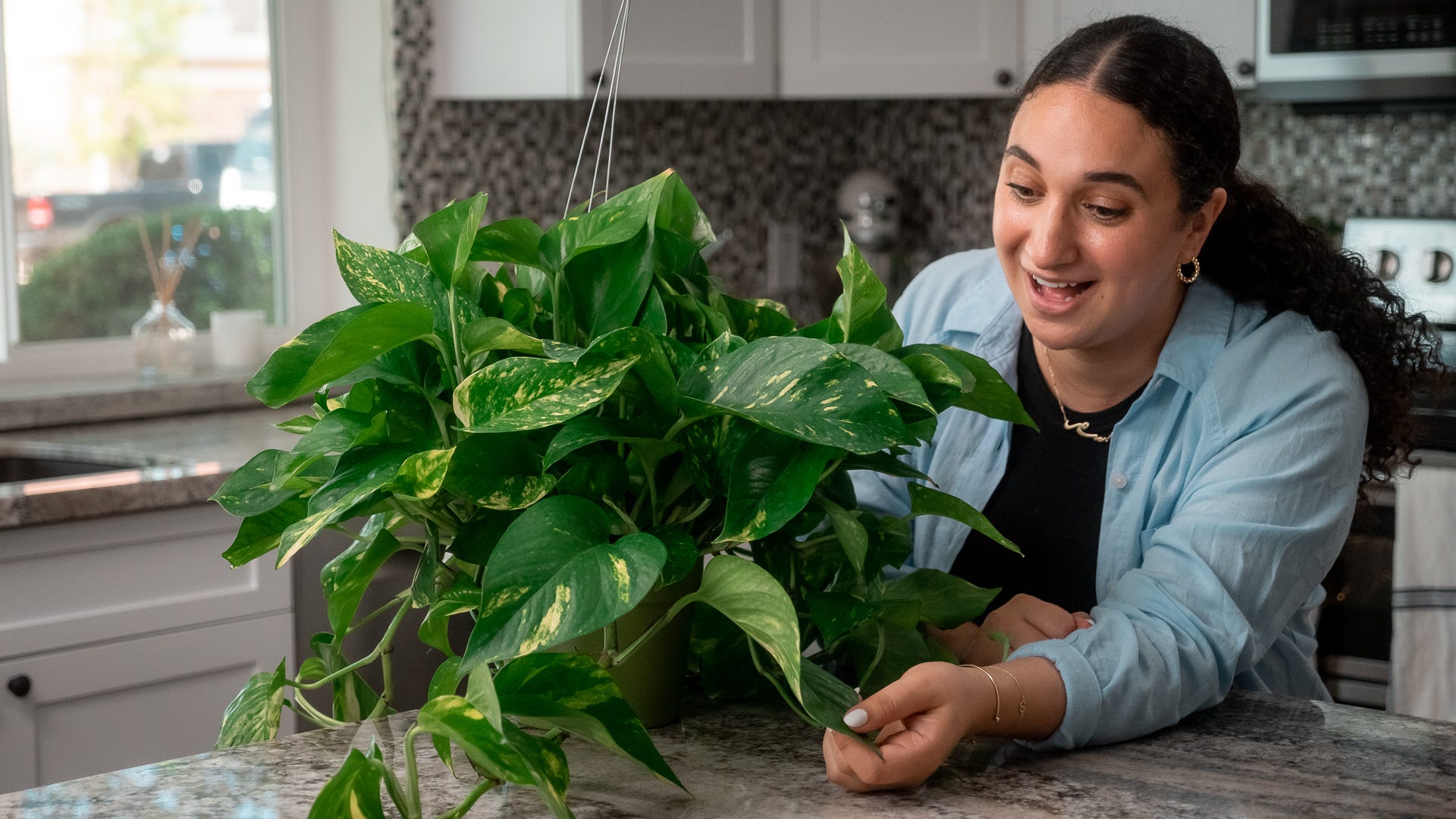Never spend money on new house plants again! Here’s how to easily propagate indoor plants.

If you're a plant lover, you know that one plant is never enough. Luckily, indoor plant propagation is not only an exciting process to watch unfold but also a cost-effective way to expand your indoor garden or share your love of greenery with friends.
Imagine this: you have a beloved indoor plant that's starting to overgrow. With a little knowledge and a sprinkle of patience, you can easily take that one cherished plant and multiply it without having to spend more cash on seeds or mature plants at the store. What's even better, you don’t have to be an experienced gardener to succeed. In fact, whether you’re new to plant parenting or a seasoned pro, you can effortlessly master this technique. Here’s how to easily propagate indoor plants and cultivate a flourishing plant sanctuary in your home.
Watch the video above to learn how to easily propagate indoor plants.
How to propagate indoor plants
- Cut a healthy stem from the plant you’d like to propagate. Cut at an angle to help the plant absorb the most amount of water possible. Use sharp, clean tools to make your cuts. This will help to prevent the spread of disease.
- Place the cutting in a jar of clean water.
- Over time the cutting will start growing new roots in the water. Patience is key. It can take several weeks or even months for roots to form.
- Make sure the cutting is constantly submerged in the water.
- Change the water out once a week. This will help prevent root rot, keep the growth of harmful bacteria at bay, and replenish minerals to keep the plant healthy. You can also add a few drops of hydrogen peroxide to the water to help prevent bacteria growth.
- Place the jar in a warm, bright location. This will encourage root growth.
- Transfer to a pot once the roots have grown at least an inch.
- You may have to make minor adjustments to the process for your specific plant.
Soil propagation is another cost-effective method to easily multiply your favorite indoor plant.
Other methods of indoor plant propagation
- Cut a healthy stem from the plant and remove any lower leaves.
- Optional: Dip the cut end of the stem in a rooting hormone. Rooting hormone contains plant hormones called auxins that help the plant root faster.
- Insert the stem into a pot of moist potting soil.
- Water the soil thoroughly and place it in a warm, bright location.
- Keep the soil moist but not soggy. In 4 to 6 weeks, you should see roots forming. Here are a few ways to know if roots have formed when propagating a plant by soil:
- Very gently lift the plant and check the soil to see if roots have formed.
- If the plant feels firm, it is likely that roots have formed. If the cutting is still flimsy, it’s likely no roots have formed.
- Look for new growth. If you see new leaves or shoots on your cutting, it’s a good sign that roots have formed.
- Once the roots are established, you can transplant the cutting into a larger pot.
Reviewed-approved garden recommendations
Purchases you make through our links may earn us and our publishing partners a commission.
Reviewed helps you find the best stuff and get the most out of what you already own. Our team of experts test everything from garden shovels to gardening gloves so you can shop for the best of the best.
- Top-rated garden hose: Flexzilla Garden Hose
- Most durable gardening gloves: StoneBreaker Gardening Glove
- Tool organizer: All Metal Garden Tool Organizer
- Best garden shovel: Hooyman Shovel with Heavy Duty Carbon Steel Head Construction
- Our favorite garden cart: Gorilla Carts 7GCG-NF 7 Cu. Ft. Heavy-Duty Poly Garden Dump Cart
More problems, solved
- Air quality: How to improve indoor air quality
- Flowers: Make bouquets last longer
- Gardening: How to protect your garden during the winter
- Laundry hack: How to fold fitted sheet easily
- Clean windows: How to easily clean blinds and shutters
- Dusty ceiling fans: How to clean without making a mess
- Carpet refresh: How to clean your carpets and rugs
- Allergies: How to keep dust mites away naturally
- Dirty pillows: Your pillow is full of germs. Here’s how to disinfect it